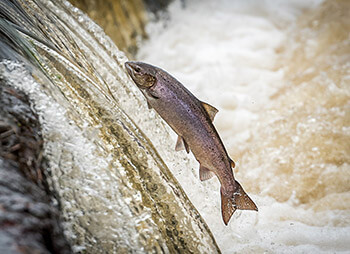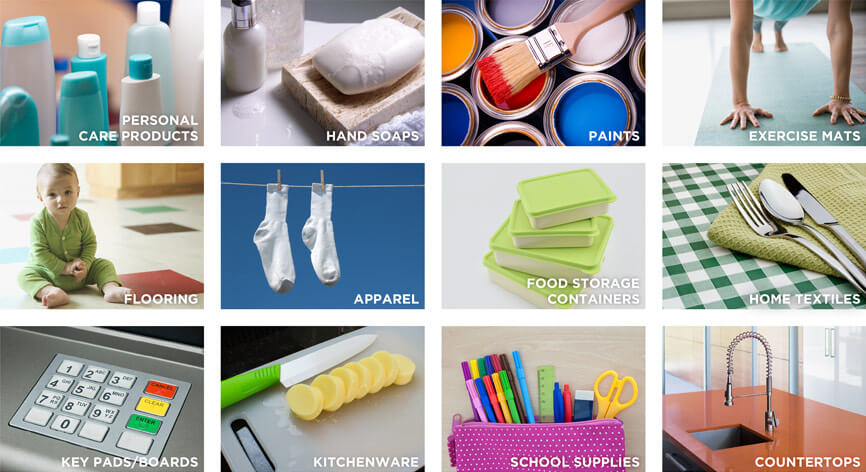Antimicrobials
Are they helping us or harming us?
What are antimicrobials?
Antimicrobials are chemicals added to products with the intention of killing or inhibiting the growth of microbes. Unfortunately, for most uses they provide no benefit to consumers and may cause health harm.
Some antimicrobials may disrupt hormone function, and some are associated with developmental and reproductive effects, allergen sensitivity, and antibiotic resistance. Learn what you can do.
Learn more about products that may contain antimicrobials. Read our factsheet on antimicrobials in consumer products and building materials.
How are we exposed?

People absorb antimicrobials through skin contact and ingest antimicrobial-contaminated house dust. Babies, who are especially vulnerable to toxics, may be exposed in-utero and later through nursing. The antimicrobial triclosan has been found in three-quarters of the U.S. population and in nearly all breast milk samples tested.
What are the concerns?
Antimicrobials are often:
PERSISTENT: Do not break down in the environment. We continue to be exposed from food and products years after the chemical is banned or phased out.
BIOACCUMULATIVE: Build up in people and animals. When products containing antimicrobials are washed down the drain the chemicals can be released into aquatic environments. They build up in people and other animals at the top of the food chain and in marine food webs.

TOXIC: Harmful to humans and ecosystems. Some antimicrobials are endocrine disruptors which are associated with developmental and reproductive harms. Some of these compounds also contribute to allergen sensitivity.
When should antimicrobials be used?
The perceived health benefit of antimicrobials as used in most consumer products is not supported by data. Washing hands with soap and water is more effective.
In fact, overuse of antimicrobials may contribute to increased bacterial resistance to antibiotics.
Antimicrobials of concern
Triclosan, triclocarban, and other halogenated aromatic compounds contain one or more atoms of a halogen (chloride, fluoride, bromide, iodide) and a benzene ring.
- These types of chemicals were among the most widely used antimicrobials before many were phased out of use by the FDA in 2016.
Nanosilver refers to tiny particles of silver.
- Nanosilver is increasingly used as an antimicrobial and anti-odor agent in products like clothing, towels, and toys. Nanosilver is toxic and can be released from fabrics into the environment when washed.
Quaternary ammonium salts (also known as quats or QACs) are salts of quaternary ammonium cations combined with a negatively charged anion.
- Quats like benzalkonium chloride and benzethonium chloride are commonly used in household cleaning products and fabric softeners. Quats have been associated with asthma, dermatitis, and allergies. They have never been proven to have a greater health benefit than safer alternatives.
What is being done?
In 2016 the Green Science Policy Institute worked with partners to draft the Florence Statement, which documented current scientific research on triclosan and triclocarban. This consensus statement concluded that these antimicrobials do not provide health benefits but do cause health and environmental harm. The statement also called for greater caution in using antimicrobial chemicals in everyday products. It was signed by more than 200 international scientists and medical professionals and published in the peer-reviewed journal Environmental Health Perspectives.
In September 2016, the FDA stopped the use of triclosan, triclocarban, and 17 other antimicrobials in hand soaps and body washes. Unfortunately, they continue to be used in other products and the use of nanosilver, quats, and other antimicrobials is increasing.
Our Institute continues to collaborate with manufacturers and large purchasers to eliminate unnecessary antimicrobials in the products they make and buy.
What can you do?
Avoid products that are advertised as “antimicrobial”, “antibacterial”, or “anti-odor”. Look for the antimicrobials listed above on ingredient labels in soaps, body washes, toothpaste, and cosmetics. Most alcohol-based hand sanitizers do not contain antimicrobials of concern and should be safer.
You can learn more about safer products on our Consumer Resources page. Discover how to limit toxic chemicals in your life on our Exposure page.
Videos
Antimicrobials: Four-minute introduction
The Florence Statement: Animated video on antimicrobials
Ann Cooper Doherty: Concerns about quats
Ted Schettler: Antimicrobials in the time of coronavirus
Learn More
- Fact sheet: Overuse of antimicrobials in gyms
- Antimicrobials in consumer products & building materials
- Biomonitoring California scientific review of quats
- Antimicrobials in hospital furnishings: Do they help combat COVID-19?
- Understanding antimicrobial ingredients in building materials
- Design for the Environment (DfE) certified safer disinfectants
- Safer disinfectant ingredients identified by TURI
- The Florence Statement

